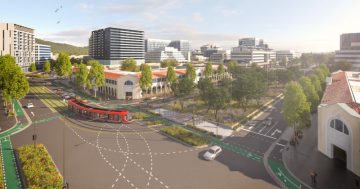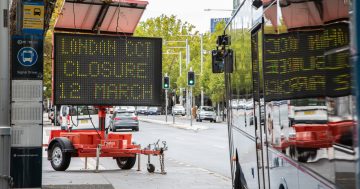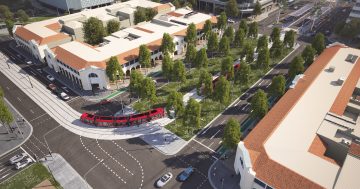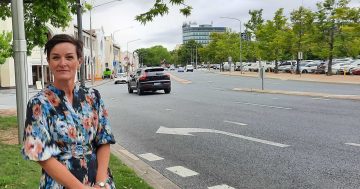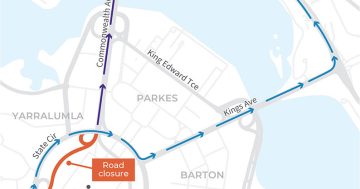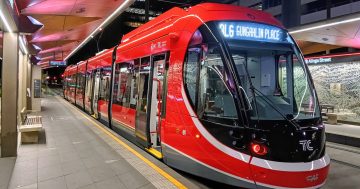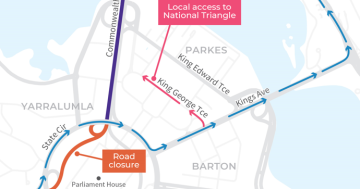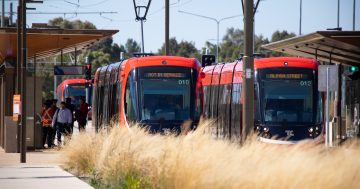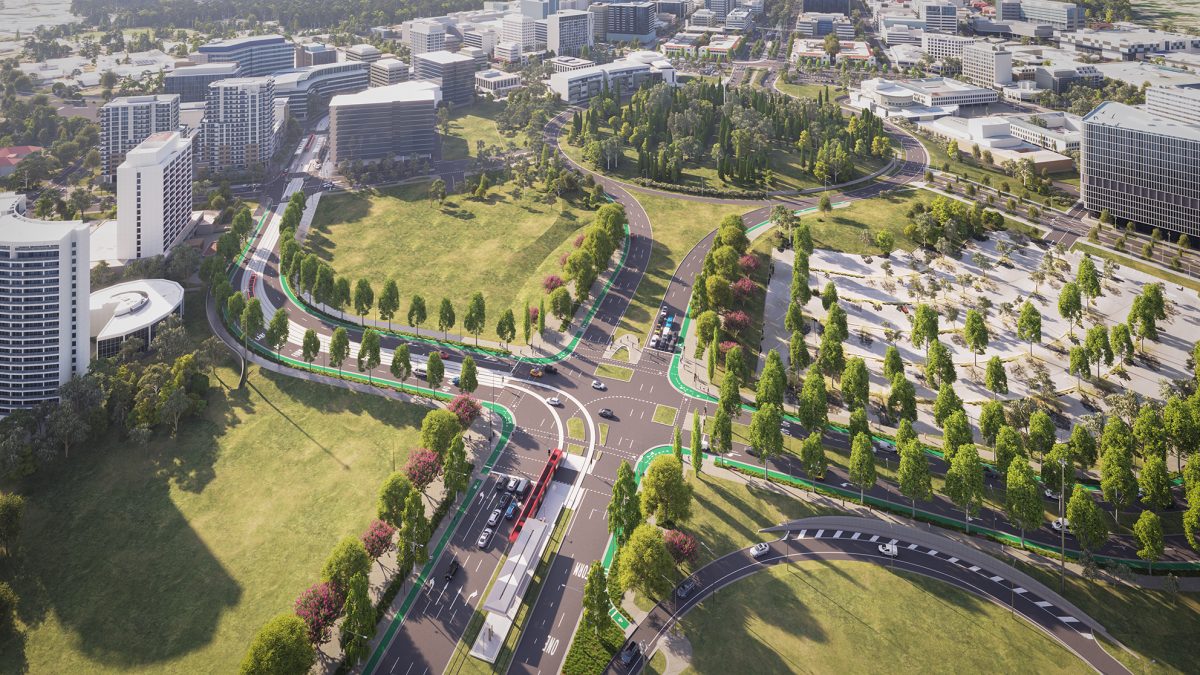
An aerial view of what light rail Stage 2A will look like when completed in 2028. Image: ACT Government.
Construction of light rail Stage 2A to Commonwealth Park will start in early February, bringing traffic and pedestrian disruptions to City West.
Infrastructure Canberra says that as the project to create a level intersection at London Circuit and Commonwealth Avenue is entering its final stages, Canberra Metro is preparing to begin work on the 1.7 km extension along London Circuit west and Commonwealth Avenue.
From early February, fencing will go up around London Circuit west, between Northbourne Avenue and Edinburgh Avenue, and the street will be cleared of features such as bike racks, water fountains, park benches, light poles and public art.
A number of trees along London Circuit west and Commonwealth Avenue will be removed, but more than twice as many new mature trees will be planted.
In-ground utilities will also be removed and relocated.
Site establishment will be done under the Parkes Way bridge to aid future works, and utilities work will be undertaken south of the lake at King Edward Terrace.
Sections of London Circuit west will be closed to motorists and on-road cyclists between Northbourne Avenue and Edinburgh Avenue. Parts of London Circuit will be re-opened as they are completed to maintain local access through the area.
Customers and suppliers will still be able to access businesses along London Circuit, and signs will be erected to assist them, visitors and residents.
Managing this will be a challenge for the project, but the government believes lessons from the Stage 1 build, when businesses were disrupted and lost trade, have been learned.
Motorists and cyclists will still be able to enter Knowles Place north and Odgers Lane, and pedestrian and wheelchair users will still be able to move along and across London Circuit.
Next month, a new construction compound will be established on the corner of London Circuit and Constitution Avenue in the current City Hill car park. It will join those already established at Acton Waterfront and City West.
In February, another compound will be established on Flynn Drive West, in the cloverleaf next to Albert Hall.
The light rail extension from Alinga Street will include three new stops at Edinburgh Avenue, City South and Commonwealth Park.
The project will not have overhead wires like Stage 1 from Gungahlin to the City as the light rail vehicles will be fitted with batteries.
Sections of the tracks will sit on a green bed and a new bridge will be built across Parkes Way.
There will also be two new sets of traffic lights on London Circuit at West Row and University Avenue.
The $577 million project is expected to be completed in 2028. It will provide city-goers with greater access to City West, the ANU, New Acton, Commonwealth Park and Lake Burley Griffin, including the Acton Waterfront, where a new public park and housing will be built.
The ACT and Federal Governments are jointly funding it, with the Commonwealth contributing $344 million overall.
Infrastructure Canberra says more details on traffic movements and construction staging will be available early in the new year.
To stay updated, visit Built For CBR.












